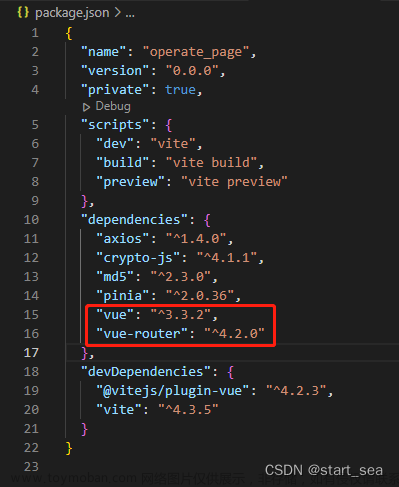构建选项区别
vue2-router
const router-new VueRouter({
mode:history,
base:_name,
})
vue-next-router
import { createRouter,createWebHistory} from vue-next-router
const router=createRouter({
history:createHistory(/)
})
在上述代码中我们发现,vue2中的构建选项mode和base,分别为mode和base,而在vue-next-router中变成了,history和history中的第一个参数/.
捕获路由加正则表达式/:catchAll(.*)
vue2-router
const router=new VueRouter({
mode:history,
routes:[
{path:/user/:a*}
]
})
vue-next-router
const router=createRouter({
history:createWebHistrory(),
routes:[
{path:/user/:a:catchAll(.*).component:component}
]
})
当路由为 /user/a/b 时,捕获到的 params 为 {“a”: “a”, “catchAll”: “/b”}。
match改变(vue2/3)
match详解点击这里
router.match和router.resolve在vue3中已经被合并,只是签名略有不同。
删除router.getMatchedComponents,可以从router.currentRoute.value.matched 中获取。
router.getMatchedComponents 返回目标位置或是当前路由匹配的组件数组 (是数组的定义/构造类,不是实例)。通常在服务端渲染的数据预加载时使用。文章来源:https://www.toymoban.com/news/detail-664149.html
push 或者 resolve 一个不存在的命名路由时,将会引发错误,而不是导航到根路由 “/” 并且不显示任何内容。
在vue2中会自动跳转到跟路由/中,而vue3会报错。文章来源地址https://www.toymoban.com/news/detail-664149.html
到了这里,关于vue-router在vue2/3区别的文章就介绍完了。如果您还想了解更多内容,请在右上角搜索TOY模板网以前的文章或继续浏览下面的相关文章,希望大家以后多多支持TOY模板网!











